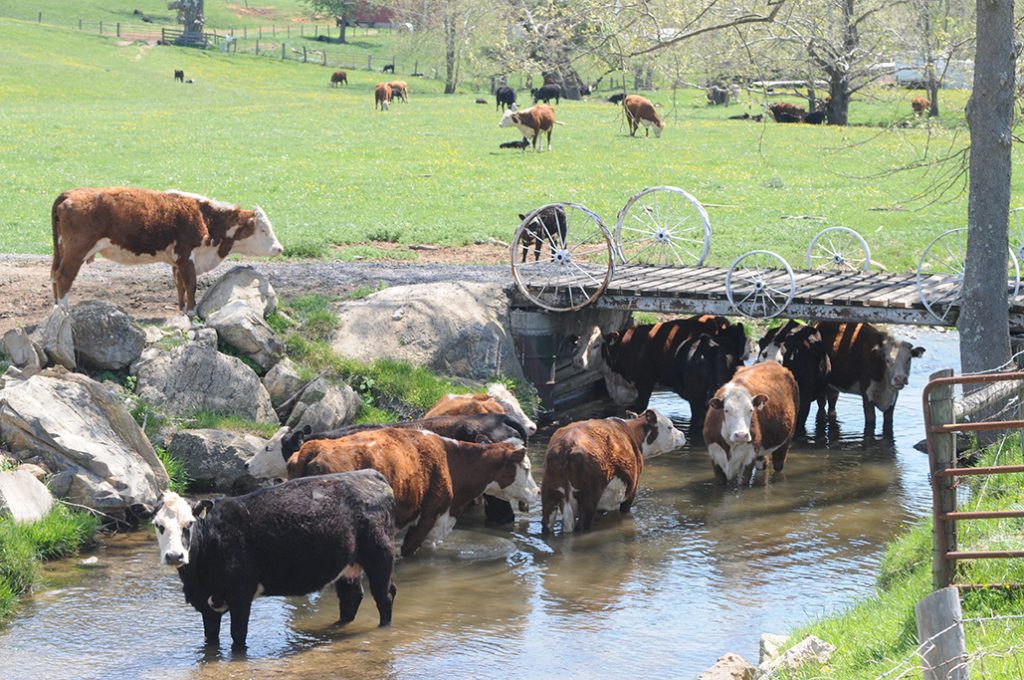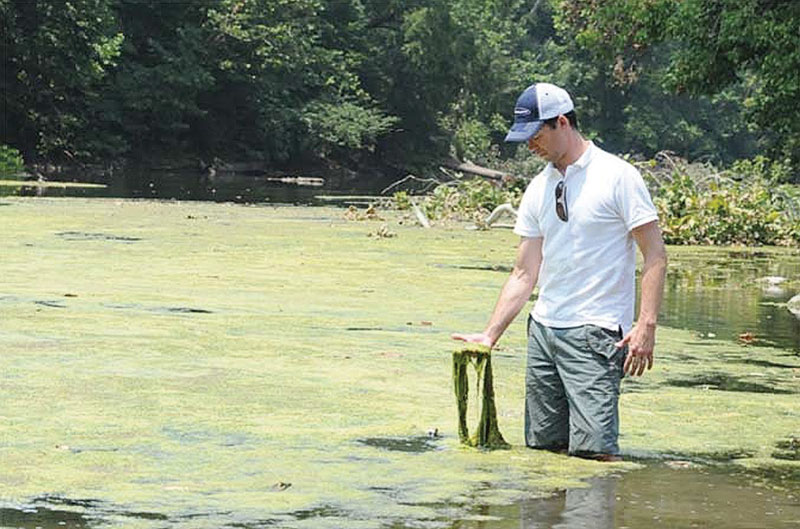Valley Waterways Polluted By Livestock Industry

The Problem
Virginia’s Shenandoah Valley, while famous for its cultural heritage and natural beauty, also hosts a thriving livestock and poultry industry. The runoff from all this livestock and poultry manure ends up in Shenandoah waters, adding to pollution that threatens to disrupt fishing, swimming, rafting, and other recreational uses that valley residents and visitors have long enjoyed. Most of the manure from the 159 million chickens, 16 million turkeys and 528,000 cows raised annually in the valley’s Shenandoah, Augusta, Page, and Rockingham counties is spread on surrounding farmland as fertilizer, but contains far more phosphorus than crops need for growth. The excess manure leaks pollutants into groundwater and is often washed by rain into surrounding streams.
Analysis
Well more than half of water quality monitoring sites in Virginia’s scenic Shenandoah Valley had levels of fecal bacteria in 2021 and 2022 that were so high that EPA would consider them unsafe for swimming. So far in 2023, those numbers have dropped, in part because 2023 has seen less rainfall. Rain flushes fertilizer and manure off of farm fields and into streams and river, and years with less rainfall also have less runoff pollution in waterways.

According to water quality monitoring data from the Virginia Department of Environmental Quality, 60 percent (or 29 of 48) of monitoring sites along the Shenandoah Valley and its tributaries had levels of E. coli, a bacteria found in the gut of warm-blooded animals, in 2021 above EPA’s recommendations for swimming. Data from 2022 showed a similar trend – 81 percent (or 46 of 57) of monitoring sites had levels of E. coli above EPA’s recommendations for swimming.
Preliminary data from 2023, which includes water quality monitoring data from January through August, shows that 40 percent (or 21 of 52) of monitoring sites had levels of E. coli above EPA’s recommendations for swimming. The percentage of sites with unhealthy bacteria levels was the lowest in the last eight years, in part because the amount of rainfall this year was also the lowest over that period. The 20 inches of rain recorded in Harrisonburg, in the heart of the Shenandoah Valley, from January through August, was a third less than the average of 30 inches.
The number of sites sampled for bacteria by Virginia is also declining, with an annual average of 70 places on waterways in the Shenandoah Valley sampled by the state between 2015 and 2018, but only 35 in 2019, 25 in 2020, 48 in 2021, and 52 so far in 2023.
In April 2019, EIP and the Shenandoah Riverkeeper released a study of aerial photographs of the livestock industry in the Shenandoah Valley that showed that 81 percent of farms in the state’s two largest farming counties—Augusta and Rockingham—failed to fence their cattle out of streams. An examination of 1,676 Google Earth images of livestock farms with rivers or streams found that only 19 percent of them (321 out of 835) had fenced their cattle out the waterways. The rest had not fenced their cattle out of all waterways on their properties, allowing the animals to deposit fecal bacteria, as well as nitrogen and phosphorus pollution, into them.
Bacteria Levels and Swimming Safety in Shenandoah Waterways
Sampling locations often change from year to year. The threshold value used in this chart is EPA’s “beach action value” for swimming, which recommends states warn the public when bacteria levels exceed 235 counts of E. coli bacteria/100 ml water. Annual rainfall data from NOAA for Harrisonburg, Va.
Shenandoah Bacteria Map
The interactive map below shows where the Virginia Department of Environmental Quality’s water monitoring found E. coli concentrations higher than the Environmental Protection Agency’s Beach Action Value of 235 counts per 100 mL of water in 2023 as of September 18, 2023. EPA recommends warning swimmers about potential health risks when E. coli concentrations exceed this threshold. (Click the “layers” button to view sampling results from previous years). The map also shows where in 2020 VDEQ listed waterways as impaired due to high bacteria levels and identifies those that still need clean-up plans (TMDLs) to reduce bacteria levels.
Recommendations
EIP has recommended that Virginia take several steps to reduce agricultural pollution in the Shenandoah, including:
- establishing a better system for collecting and disposing of surplus livestock manure;
- requiring fertilizer management plans for all farms that spread manure;
- increasing inspections and enforcement;
- requiring all farmers to fence their cattle out of public waterways;
- and requiring state notifications about when water is unsafe for swimming.
Related EIP Reports and Press Releases
Virginia Monitoring Data Show Shenandoah Valley Waters Remain Bacteria Hotspot (August 30, 2018)


